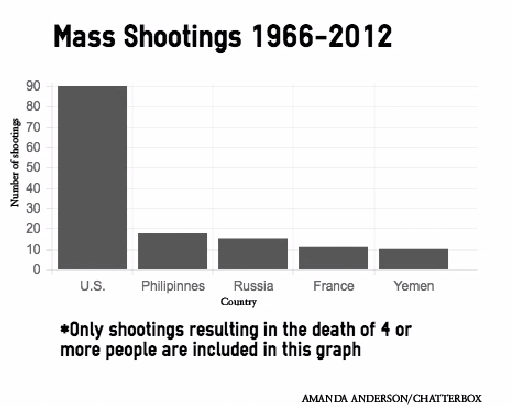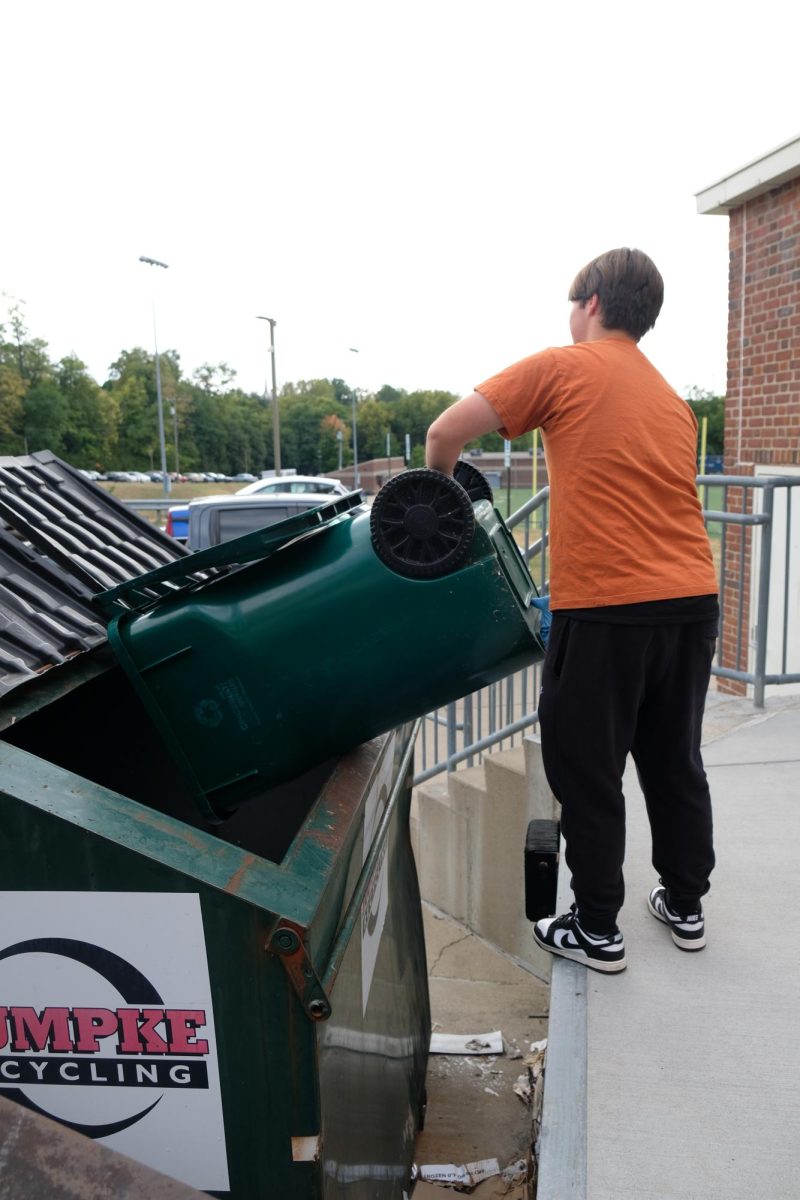United States Surpasses Other Countries in Mass Shootings

The above graph depicts the amount of mass shootings that resulted in the death of four or more people since 1966. When comparing the rates of gun violence and mass shootings in counties, the amount of mass shootings targeting random civilians greatly outnumbers other countries. As shown, the Philippines, who have the second largest number of shootings, have only suffered 18 compared to the U.S.’s 90.
March 2, 2018
The recent tragedy in Parkland, Florida has once again brought attention to the uniquely American epidemic of mass shootings. Although many of the selected guests from the White House that accompanied President Donald Trump to Parkland to speak with victims that believe in targeting mental illness, bullying, gun-free zones and FBI negligence to solve this decades-long problem, stricter gun laws have proven to be an endgame solution in many other countries.
Research has proved that countries with fewer guns have lower homicide rates. Even certain states in the U.S. that have less gun ownership have fewer gun deaths. A 2013 study published in the American Journal of Public Health found that every percentage point increase in gun ownership corresponded to a 0.9 percent higher risk of gun homicide.
Mass shootings in other countries have been responded to differently than in the U.S. Automatic and semi-automatic firearms were banned in Germany in 2008 (excluding hunting and sport-shooting, which require permits) in response to the 2002 Erfurt Massacre, when a 19 year old killed 17 people in school.
In Switzerland, where gun ownership is viewed with similar attitudes as in the U.S., the law was changed in 2008 to require stricter ammunition storage after a man killed 14 and injured 14 more in a regional parliament.
In 1996, Australia passed the National Firearms Agreement 12 days after a mass shooting, banning automatic and semi-automatic firearms for personal defense, as well as enforcing stricter background checks. Australia has had no school shootings since.
According to United Nations data, the U.S. has nearly six times the gun homicide rate of Canada, more than seven times that of Sweden, and nearly 16 times that of Germany. These overwhelming numbers reaffirm the grotesque trend of mass shootings in the U.S.
German Lopez, a writer for Vox, a general interest news site, who has covered mass shootings since 2014, believes that the U.S. won’t admit that it has a gun problem. His most recent piece of evidence was President Donald Trump’s speech responding to the Florida shooting; he did not mention guns once, merely focusing on working “with state and local leaders to help secure our schools and tackle the difficult issue of mental health.”
However, mental illness does not seem to be the main issue. Out of the 235 mass shooters in Columbia University’s database, only 52 had mental illnesses, 22 percent.
Research and experience from other countries has shown that stricter gun laws have proven to be an effective solution against mass shootings, and if the U.S. wants to avoid another senseless massacre, it is important to reconsider our laws.
Text “RESIST” to 504-09 to contact your local government officials and voice your opinion on the gun control debate.






